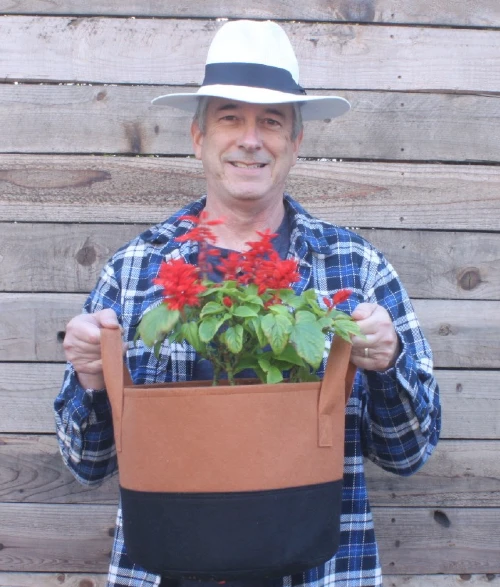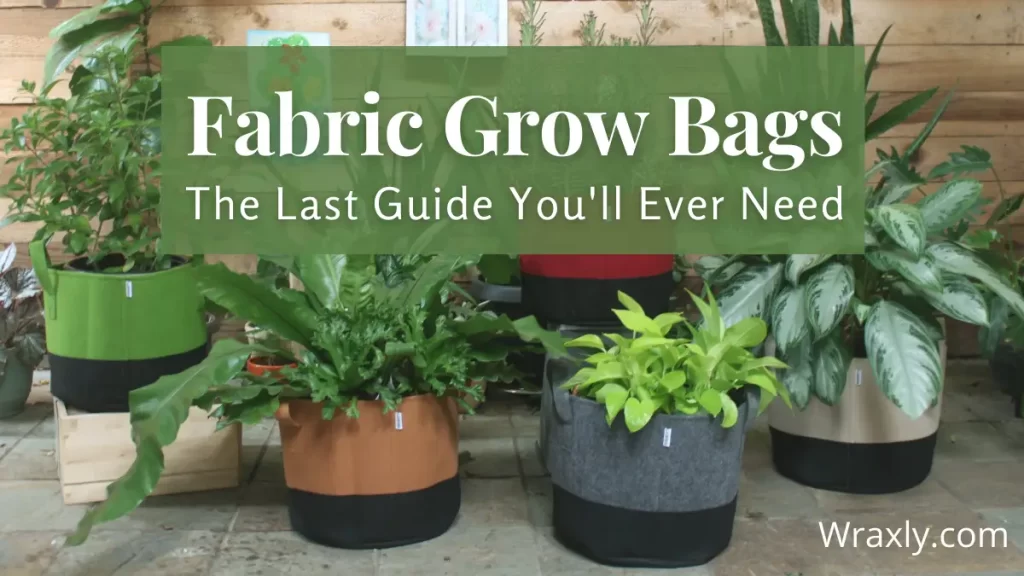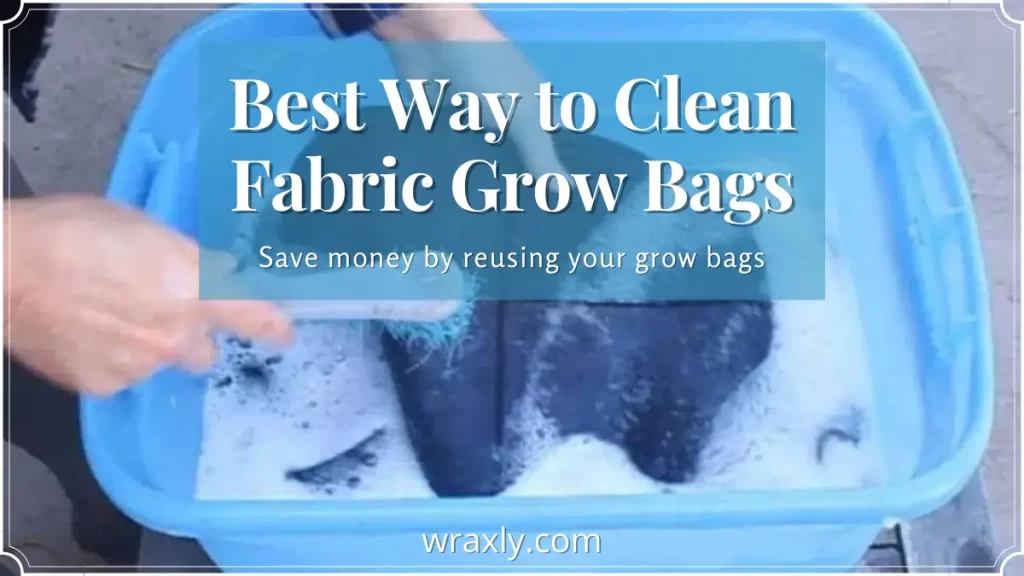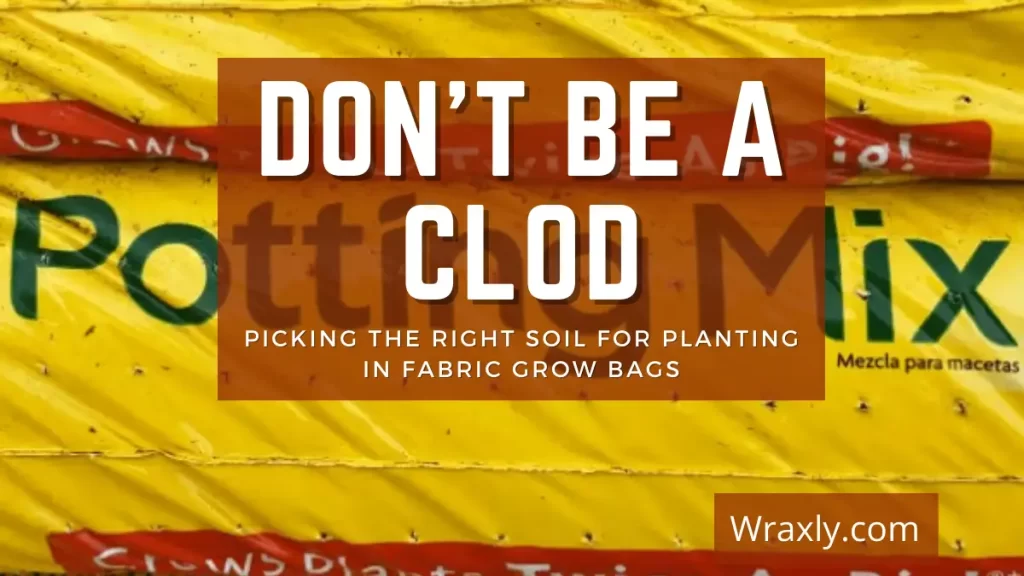Do you love to garden but don’t want to break the bank? Consider making DIY grow bags! There are several ways to do this, and you can save a lot of money in the process. In this blog post, we will discuss some of the best methods for how to make grow bags for plants. We’ll also provide some helpful tips on what grow bag fabric you can use and some grow bag measurements you should consider. So get ready to start gardening like a pro – without spending a fortune!
![How to Make DIY Grow Bags [and Save Money!]](https://wraxly.com/wp-content/uploads/2022/03/How-to-Make-DIY-Grow-Bags-and-Save-Money.webp)
Table of contents
Why You Should Make Your Own
There are plenty of reasons to make your own grow bags rather than purchasing them from a store. For one, it’s more economical. You can reuse materials that would otherwise be destined for the trash, and you have complete control over the size and shape of your grow bag.
If you’re looking for a fun project to do with the kids, making grow bags is a great way to get them involved in gardening. Not only will they take pride in their handiwork, but they’ll also learn about the importance of taking care of plants. So go ahead and give it a try – you may be surprised at how easy and rewarding it is to make DIY grow bags!
What is the Best Fabric for Grow Bags?
When choosing a fabric grow bag material, look for something durable and breathable. A heavy-duty canvas or nylon will withstand repeated use and provide adequate drainage. For a more natural option, coco coir is a sustainable material made from coconut husks that is an excellent choice for growing plants. If you’re looking for something that will last longer, consider using polyethylene fabric. This synthetic material is UV resistant and will hold up well to the elements, making it a great option for outdoor gardens.
Here is a list of material that can be used as grow pot fabric. Depending upon your own environmental conditions, you can expect this material, when used as grow bag fabric, to last from 1 to 2 growing seasons (YMMV).
- Felt – This fabric is made from recycled materials and has a porous structure that allows for good drainage. This is the fabric most commercially available grow bags are made from.
- Burlap – A natural fabric that will allow air and water to pass through.
- Coir – Made from coconut husks, Coir is a sustainable fabric that is perfect for growing plants.
- Polyester – A synthetic fabric that is a good choice for outdoor gardens.
- Landscape fabric – Made from polypropylene or polyethylene. Landscape fabric grow bags are durable and long-lasting.
- Hemp – A durable fabric that is perfect for DIY grow bags.
- Muslin – A lightweight fabric that will allow your plants to breathe and prevent them from overheating.
- Recycled materials like old jeans or t-shirts.
Click here to download your FREE guide to organic weed and pest control
Grow Bag Measurements
When deciding on the size of your grow bag, consider how much space you have and what you will be growing. If you’re tight on space, a smaller grow bag can be placed on a windowsill or countertop. For larger plants, a larger grow bag will give your plants room to root and grow. Keep in mind that the fabric you choose will also affect the size of your grow bag. A thicker fabric like canvas is best for larger bags, while a thinner fabric like muslin is perfect for making smaller bags.
Grow Bag Measurement Guidelines

- For small plants or herbs, use a grow bag that is up to 12 inches in diameter. Perfect for windowsills or countertops.
- For larger plants, use a grow bag that is up to 24 inches in diameter.
- If you have a large garden or want to grow multiple plants, use a grow bag that is up to 36 inches in diameter.
- To determine the proper height of your grow bag, consider what you intend to grow. Vegetables have different root depths so you want to match the vegetable with a grow bag with the proper depth. Check out this vegetable root depth chart as a guide.
Best Methods for Making DIY Grow Bags
There are a few different methods that you can use to make DIY grow bags:
- Upcycle an old pillowcase or t-shirt. Simply fill the fabric with potting soil and compost, then sew or tie it shut. You can also repurpose an old pair of jeans by cutting them into long strips and tying them together to form a bag.
- Use burlap sacks, which can be found at many craft or fabric stores. Just fill the sack with soil and plants, then close it up with string or twine.
- Buy a roll of fabric from a fabric store. This is a great option if you want to make multiple grow bags at once. Just cut the fabric into squares or rectangles, then sew the sides together.
- Use fabric that you already have lying around the house. This will help reduce costs significantly.
- Look for deals on fabric at local fabric stores or online. You can often find great deals on high-quality fabric, which will make your DIY grow bags last even longer.
How to Sew Your Grow Bag
Making your own grow bags isn’t as hard as it may sound. All you need is a little bit of fabric and some basic sewing supplies. You can use any type of fabric, but we recommend using heavy-duty fabric like canvas or nylon. Start by cutting two pieces of fabric into squares or rectangles. Then, use a sewing machine or needle and thread to sew the two pieces together, leaving a small opening at one end. Next, turn the bag right side out and fill it with potting soil and compost. You’re ready to add plants or seeds!
FURTHER READING
- Fabric Grow Bags: The Last Guide You’ll Ever Need
- How to Clean Fabric Grow Bags
- How Long do Grow Bags Last?
- What is the Best Grow Bag Size for Vegetables
Tips to Keep in Mind
Now that you have some idea how easy it is, here are some tips for making your DIY grow bags:
- Choose a fabric that is at least 12 inches wide. This will give you enough room to fill the bag with soil and add plants.
- If you are using recycled materials, make sure to wash them thoroughly before use.
- Use a breathable material like felt, canvas or burlap, as it provides root aeration and prevents the potting mix from getting too soggy.
Easy Grow Bags
Here’s a trick that might be perfect for some gardeners. Simply purchase a bag of potting mix and use that as your grow bag. Place it in the location of your choice, punch some drainage holes along the bottom, then cut out holes on the top and plant your seeds or transplants. Instant DIY grow bag. It can’t get any easier than that!
HANDPICKED RELATED CONTENT: 10 Alternatives to Fabric Grow Bags for Your Garden
Final Thoughts
Making your DIY grow bags is a great way to save money and reduce waste. With a little bit of fabric and some basic sewing supplies, you can make your own grow bags in any size or shape. While any material will work, we recommend choosing a breathable fabric like canvas or burlap which will allow the roots to breathe. And don’t forget to wash any recycled materials thoroughly before use. Happy gardening!

Darrell has a passion for gardening that he inherited from his father. Go here to read more about the influence his father played in his love for gardening. If you want to send Darrell a quick message, then visit his contact page here.



![Container gardening for beginners [Buying guide]](https://wraxly.com/wp-content/uploads/2021/02/Container-gardening-for-beginners-Buying-guide-1200-1024x576.webp)